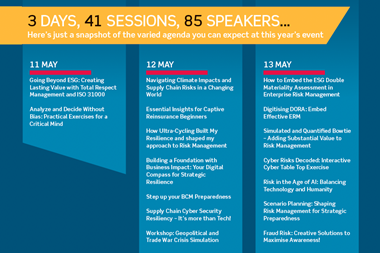Organisations have tools at their disposal that allow them to direct and optimise their management strategy. Outsourcing is one of those tools: the organisation can either carry out all the actions related to its activities itself, or else resort, in whole or in part, to service providers.
Many people still confuse outsourcing with simple sub-contracting, or with the purchase of services from specialist suppliers. But outsourcing is above all a strategic positioning, a decisive choice made by the organisation. It derives from a decision by the board that directly impinges on the core business of the enterprise and on where it sets its boundary fence, in the widest sense of the term. Seen thus, the risks are many, involving as they do the areas of skills and competencies, long-term dependency, and the conduct of the contract which links the enterprise to its supplier.
An attempt to define outsourcing
Seen in this strategic light, outsourcing is distinct from traditional sub-contracting. It concerns activities which make a substantial contribution to the value added by the enterprise. These can be supporting functions, such as IT, transport, logistics, or telecommunications, or they can be activities which provide a contribution to the quality of the service or product, and thence to the creation of value for customers. However, they cannot completely belong to the core business of the enterprise for, in such a case we would be talking purely and simply about a complete restructuring of the company.
The four principal elements which characterise strategic outsourcing are:
1 The transfer of the ownership of all or part of an activity which was previously carried out internally
2 A comprehensive contract, more substantial and binding than a simple sub-contracting deal
3 A long-term relationship between an enterprise and its partner or supplier
4 A contractual definition of the services rendered and the obligations of each party.
Why choose outsourcing?
Companies are currently faced with an economic environment which pulls them in different directions: globalisation and increasingly intense competition, volatility of demand coupled with the consequent need for a flexible supply, and the need to take account of the expectations of shareholders in maintaining the long-term value of the company.
These factors lead companies to implement alternative development pathways to exploit their competitive advantage. The need to optimise the allocation of resources and to re-focus them on the core skills of the business, has led several companies to entrust various activities, judged to be non-decisive, to external suppliers.
Attributes of outsourcing
Outsourcing means 'getting something done for you' - that is to say removing non-strategic activities beyond the boundary fence. In the early days, these were usually peripheral activities, such as security, catering or site maintenance, but later they came to involve functions which were more central to the business, such as accounting, IT, logistics, or legal services.
Nowadays, outsourcing can take the form of 'delegated management', which can in certain cases lead to the transfer of an activity and its personnel to the supplier. Taken to its ultimate conclusion, a 'virtual' company would evolve, whose job would be to act as the interface between different professions engaged on a common project.
The strategy of outsourcing brings several competitive advantages - which explains both its interest and its increasing frequency. Among them are:
- a very significant reduction in the constraints imposed by globalisation and its competitive intensity
- an additional flexibility, which aids faster reaction to volatility in demand
- a reallocation of resources, with investment concentrated on central, strategic activities
- the opportunity to benefit from the knowledge and competencies of specialists, while retaining a high degree of control over the standards of the sub-contractors.
Nevertheless, this strategy does bring a multitude of risks with it, which must be evaluated and taken into account. These are outlined below.
Control, under-performance and non-performance
Outsourcing can change the balance of the relationship between an enterprise and its supplier by increasing the former's dependence on the latter, leading in some cases to suppliers taking short-term advantage. Many organisations, for example, have entrusted their entire IT development to a supplier, only to find themselves in a position of complete dependency. One of the contractual risks of outsourcing is under-performance or non-performance, as in the case where a supplier delivers a service which does not meet the specifications laid down in the contract. The result will be a loss or even major damage. This risk arises because the customer has no real control over the supplier's methods and practices. To limit the risk, companies carefully review experience and reputation when selecting a supplier, and subsequently set up systems to supervise and control performance, using incentives or penalties where appropriate.
It would be a mistake to think that the risk of under-performance is always the supplier's fault. The customer's behaviour and organisational structure can have a direct and sometimes decisive effect on the supplier's performance.
It is also worth noting that this risk can expose a company to a potential loss of its competitive advantage, especially if it rests on operational know-how or specialised techniques.
The control of costs
Although outsourcing can bring a significant reduction in visible costs, companies often underestimate the increase in indirect or hidden costs which it involves. These costs arise from the need to set up systems to supervise and control the outsourced activities (coordination of personnel, drawing up and regularly reviewing contracts, supervision of the supplier, and so on). Nor is it always easy for the customer to keep control of the cash flow. All these can limit the savings made by outsourcing.
Employees and the French law
In France, the law allows for the transfer of personnel when outsourcing activities which are covered by article L122-12 of the code de travail. The new supplier must take over their contracts. However, a company ought to treat this with caution. In effect, the law only allows the transfer of services or activities together with their personnel if those activities are 'economically independent entities'. And in France it is important to remember that the 'lending out' of labour is strictly reserved to businesses such as temping agencies. There are a number of regulations which it is as well to conform to, to avoid the risk of being brought in front of a tribunal.
Too few suppliers - the market risk
Outsourcing brings risks which are directly linked to the limited number of suppliers in the market. A number of big enterprises may advertise their willingness to join up with suppliers who have international reach and who are prepared to accompany them in the development of their business. But the number of such suppliers is very small. And the fewer they are, the more delicate is the position of the company wishing to outsource. In the end, it may be forced to stick with its chosen supplier, even where it is less than satisfied with the performance. Furthermore, the existence of this seller's market exposes companies to the risk of an overall lowering of standards and loss of distinctiveness among suppliers, and possibly to a virtual monopoly, where tailor-made solutions for keeping a supplier on board may hinder the eventual re-integration of a function or its transfer to another provider.
Loss of control
Loss of control over the outsourced activity is of particular importance when it comes to outsourcing functions to do with data management. Such functions underpin marketing, management control, stock management and so forth. Confidentiality and data security are therefore crucial areas to watch. In the wider field, the risk of losing control over the outsourced activity is often significant, especially when it comes to continuity of supply, price and quality.
Companies should therefore develop a specific competence in overseeing sensitive outsourced functions. This assumes that the relevant skills are kept up to date within the company, and that appropriate management tools are developed. These may include such matters as the definition of roles and responsibilities, the evaluation of performance, methods for detecting and redirecting any drift in standards, and the use of penalties, controls and audits.
Loss of information and know-how
The question of loss of know-how is a crucial one for companies wishing to outsource. The transfer of skills and personnel to a supplier implies a consequent loss of individual and organisational competencies. The risk is that this loss of competencies becomes irreparable. However, managing relations with the supplier, assuring continuity, putting in place the necessary controls and reviewing the contract require that the necessary competencies should also be preserved if full advantage is to be taken of outsourcing.
In the long term, outsourcing does run significant risks of losing know-how. It implies loss of information and operational knowledge about the outsourced activity. It can happen that an organisation which focuses solely on its core activities can be very efficient in the short term, but may find itself badly positioned in the long term, if it has abandoned competencies which turn out to be critical in the future. It will be particularly vulnerable to any change which may emerge in its business environment.
Lessons and conclusions
Outsourcing does not suggest for a moment that an organisation entirely detaches itself from an activity. What happens is simply that it continues to call on its resources, but through the medium of an external supplier. Thus, outsourcing can be simply thought of as a long term 'transfer of resources'.
The more that outsourcing takes on a strategic aspect, the more important the outsourcing contract becomes, and the more the continuity of the structure matters. In the realm of the sub-contracting of general services, such as catering or gardening, things are relatively easily managed. If the supplier does not measure up, it is easy enough to dispense with it and replace it with one of its numerous competitors. One supplier can easily take the place of another, and the market is very competitive. Contracts are usually short-term (18 months to two years) and usually allow a supplier to be replaced at short notice. However, once specific resources are transferred to a supplier, outsourcing takes on a strategic aspect, because the enterprise exposes itself to risks, and exposes its own customers to risks too. In such a case, an element of dependency creeps in, and it becomes necessary for the outsourcing enterprise to protect itself against possible opportunism on the part of its supplier.
On the whole, managers are fully conscious of the risks of outsourcing, particularly since the resolution of an unhappy outsourcing experience involves reconstituting the resources in-house. This is a complex and costly affair, involving the 'repatriation' of both personnel and equipment.
The two key elements in outsourcing are the contract and the setting up of the operation. The contract must be as precise as possible, to protect the outsourcing organisation, which is, after all, entrusting resources to someone else for the long term. It is placing itself in a position of dependency and the contract is its only means of exerting control. So, the more complete and precise it is, the more confidence the organisation can have that it will get the desired level of service.
To conclude: Outsourcing is principally done with a view to reducing costs. However, this immediate objective should not obscure the risks that are inherent in the strategy; risks which may partly explain current moves to re-integrate functions.
Do such moves prefigure a new trend? It is too early to say. The systematic search to achieve savings through outsourcing is becoming of less importance than the nurture of those functions within the enterprise which favour the growth of long term value. It follows that an organisation which is contemplating outsourcing must, above all, identify and evaluate the risks that such a decision may have on the long-term creation of value.
- Cyril Vegni is director of risk management, Equity, Tel: 0033 1 47 96 7070. Sebastien Guery is senior consultant and lecturer at the University of Science and Technology, Nantes.
OUTSOURCING CONTINUES TO GROW
While mega outsourcing deals are declining, smaller short-term arrangements are likely to grow, according to Gartner, Inc.
As companies attempt to implement more multi-sourcing agreements, the number of mega-deals awarded to a single service provider has declined, says Gartner. Mega-deals are characterised as being worth more than $1bn. In 2005, 11 outsourcing mega-deals were awarded, a decline from 12 in 2004 and 16 in 2003.
"This is part of a trend we see in IT outsourcing (ITO) in which comprehensive, end-to-end contracts signed with a single vendor are declining. Even some existing mega-deals are being re-competed and broken up among multiple providers that bring best-of-breed skills," said Kurt Potter, research director for Gartner's IT services and outsourcing research group. "Business process outsourcing (BPO) mega-deals will continue to be the exception rather than the rule, as most BPO activity will continue around smaller, more focused deals, primarily in the back office and horizontal functions with human resources, finance and accounting."
Although the contract value of individual outsourcing deals continues to decrease, there will be more of them and they will drive the outsourcing market to a growth rate of 7.3% from 2004 through 2009, predicts Gartner. The uptake in outsourcing as a business tool will continue and ITO will experience mature growth in 2006 at 5.1%, while the less-mature BPO market will grow faster at 8.7% in 2006.
Gartner has maintained an outsourcing contract trends database since the early 1990s, as a means of tracking the activity and trends in the outsourcing market for public and private organisations. All of these contracts publicly disclosed their dollar value and duration, as well as the nature of their services and the name of the client and the outsourcer. The database is not a comprehensive history of all publicly disclosed contracts, but is representative. Contracts from more than 400 outsourcing vendors, 12 industries and the major global regions are included.
"In regions with mature outsourcing practices, such as North America and Western Europe, the decline in mega-deals is caused by a move to selective outsourcing - signing smaller deals with multiple service providers - and more experience in outsourcing in the largest enterprises, where that experience can help them pick and choose the best vendors and services at the appropriate price therefore reducing possibilities for mega-deals," Potter explained.
Mega-deals represent a significant share of total outsourcing contract value, averaging $25.3bn per year between 2003 and 2005. On average, mega-deals represent 52 percent of publicly reported outsourcing contract value, and represent more contract value than all contract value categories combined. "Given that mega-deals are set to decline in the near future, increasing numbers of outsourcing deals will occur in the $100m to $999m range. This is a consequence of a renewed service provider focus on the midsize market and will become the new battleground for the mega-deal providers," said Potter.
Contract term lengths are also on the decline. The average of length of an ITO contract declined from 6.2 years to 5.3 years from 2003 through 2005. The average length of a BPO contract declined from 5.5 years to 4.8 years during the same period. When measured independently by year and type of outsourcing, the median length is consistently five years. The largest BPO deals are trending longer than the largest ITO deals because of lack of standardisation and maturity in the market, which forces longer terms by service providers.
"The days of the 10-year outsourcing contract are numbered," said Potter. "End-user organisations have tough experience from their first-generation outsourcing deals and have learned how quickly their outsourcing contract becomes outdated. Declining asset life cycles, constant business changes, cost, innovation and cultural/business fit are affecting the contract length in the life of an outsourcing relationship. Organisations want shorter contracts with flexibility that won't lock them in."
More information is available in Gartner's report Market Trends: Outsourcing Contracts, Worldwide, 2005. This report examines the outsourcing contract activity captured in the Gartner Database from 2003 through 2005. It is available at www.gartner.com/DisplayDocument?ref=g_search&id=490855



















